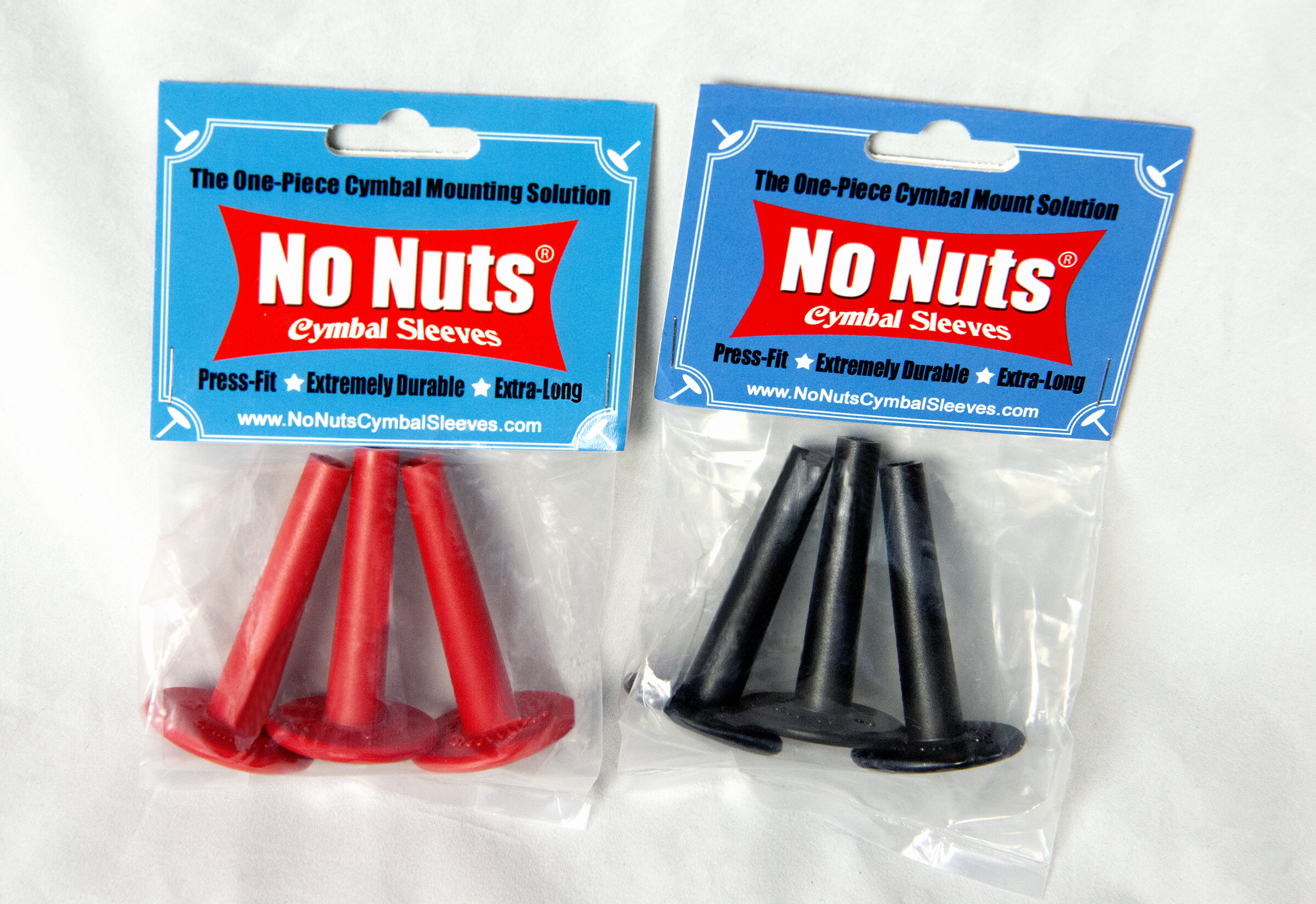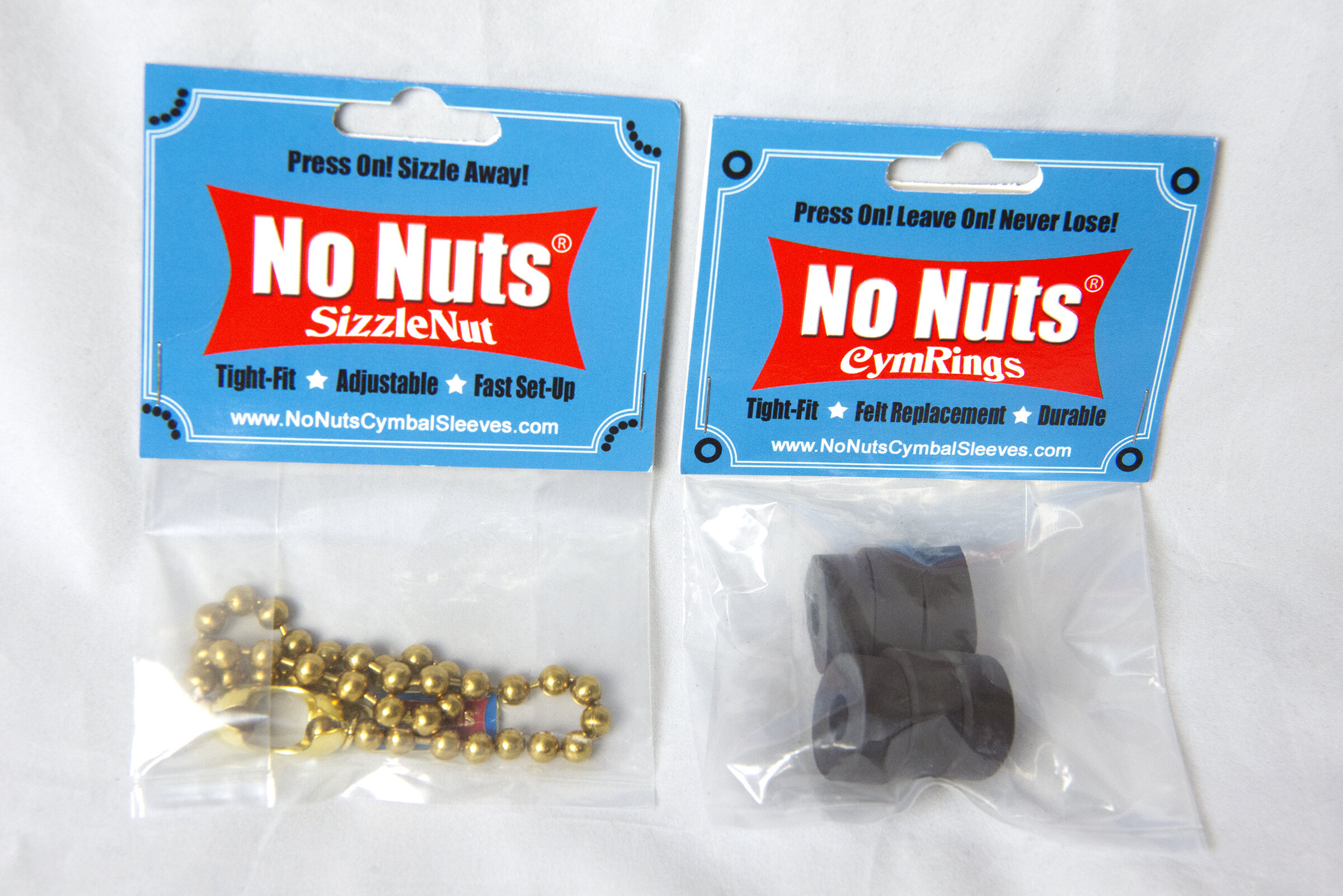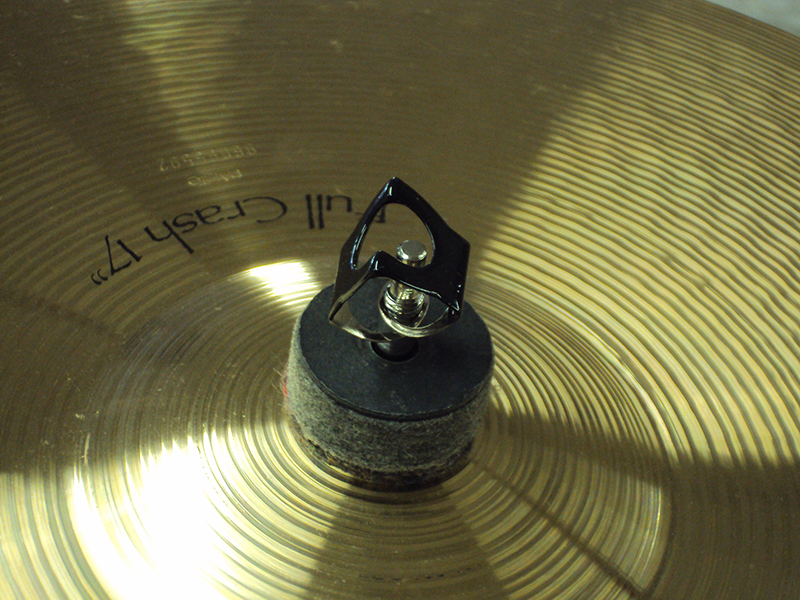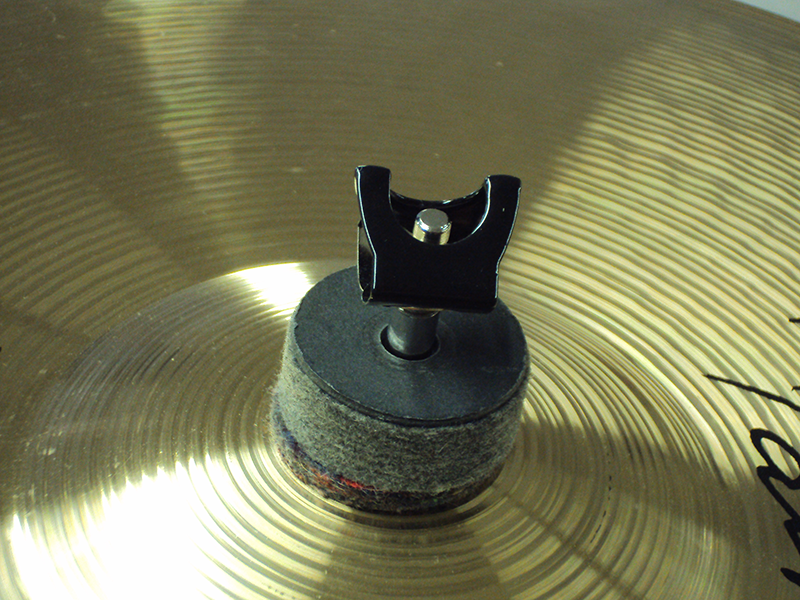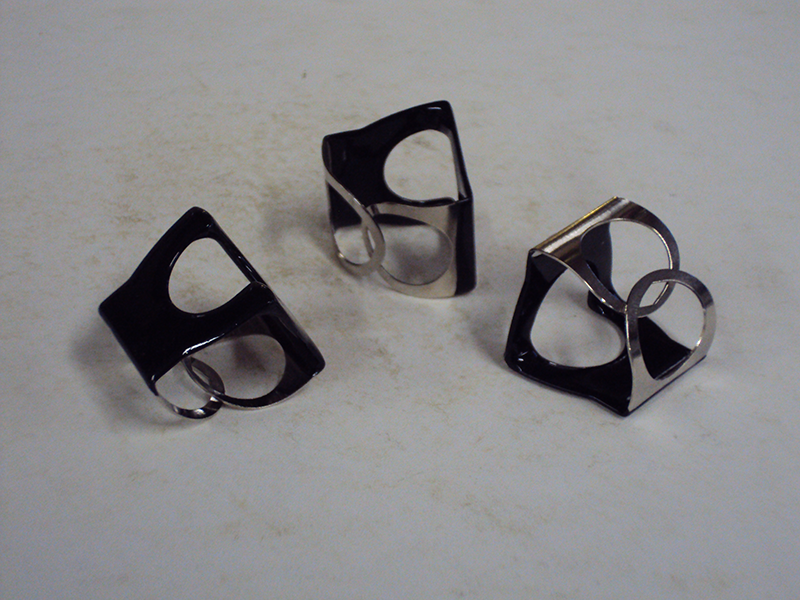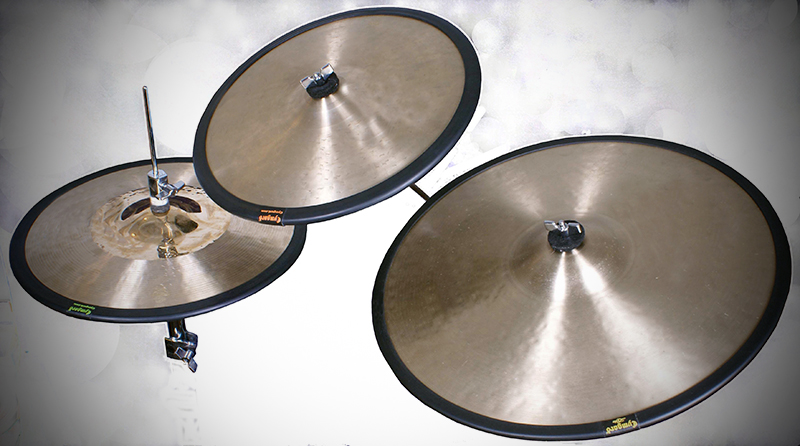As a drum historian it has been my pleasure to sit with some of the greats in the drumming world including Louie Bellson, Elvin Jones, Jake Hanna and Nick Fatool for the Gretsch book and Joe Morello, Arthur Press and Arnie Lang for the Gladstone book. Roberto Spizzichino (10 January 1944 Pescia, Italy 21 November 2011), often called “Il Maestro,” was the most memorable.
I was aware of Spizzichino and his timeless handcrafted cymbals before I moved to Italy eleven years ago. My first experience sampling one of his works was at the Chicago Vintage and Custom Drum Show back in the early 90’s. Luciano Pacchioni was importing these then-new vintage-“K” Zildjian-sounding cymbals. I was amazed with the sound and consistency of these instruments. Knowing I would be moving to Italy, I elected to wait for a factory visit to purchase one.
Check out this YouTube video for a tour of the factory:
[video][/video]
 Shortly after arriving in Italy I had Pacchioni arrange a meeting with Spizzichino at his Pescia, Italy factory. I was half-expecting a temperamental headstrong artisan. I couldn’t have been more wrong. “Simpatico” is the Italian word that best described him that translates as “amiable,” but loses something in the translation.
Shortly after arriving in Italy I had Pacchioni arrange a meeting with Spizzichino at his Pescia, Italy factory. I was half-expecting a temperamental headstrong artisan. I couldn’t have been more wrong. “Simpatico” is the Italian word that best described him that translates as “amiable,” but loses something in the translation.
Being a Gretsch drum/drummer fan, Spizzichino asked for a copy of my book Gretsch Drums, The Legacy of “That Great Gretsch Sound.” We discussed points I made in the book about the Istanbul (Constantinople) K Zildjian cymbals Gretsch imported to America back in the day. We also talked about his philosophy of what makes a good cymbal followed by lunch at his favorite restaurant.
Even the restaurant experience was a memorable one. I had just moved to Italy and any restaurant visit seemed to be a gastronomical event. This one had a strange twist. When we were seated at our table I asked Roberto what was the specialty of the house. “Baccalá” he proudly claimed, and was wide-eyed when I jumped up shrieking, “No!” looking for the nearest exit. “Do you know what baccalá is?” he asked. “I sure as hell do!” I said. “Whenever I was mischievous around my Italian-born grandmother she would wave her hand saying ‘Your getting baccalá’ followed by a hard slap to my backside.” Both Roberto and Luciano exploded with laughter. Roberto said, “God bless your grandmother Chet, but that is just an expression. Baccalá is codfish and is a delicacy in this region. The reason for the “baccalá” expression when you are being punished is cod is flat when it is died and makes a great paddle. You should really try it.” I did and it was indeed wonderful, but to this day when a waiter suggests baccalá I tremble.
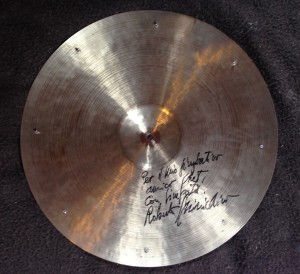 When we returned to the factory I quickly moved to my primary objective…purchasing my first Spizzichino cymbal. He had me sample several of his works. As I refined my selection he said, “I think I have something you will like.” There is nothing like having a person like Spizzichino select a cymbal for you. It was love at first sight/sound. Of course I continued my sampling as I wanted to be sure of my choice, but inevitably returned to my new 21” Rivet Ride. I asked Roberto to sign the bottom of the cymbal. He signed it “Per il mio simpatico amico Chet, con simpatia! Roberto Spizzichino” (For my amiable friend Chet, with pleasure! Roberto Spizzichino).
When we returned to the factory I quickly moved to my primary objective…purchasing my first Spizzichino cymbal. He had me sample several of his works. As I refined my selection he said, “I think I have something you will like.” There is nothing like having a person like Spizzichino select a cymbal for you. It was love at first sight/sound. Of course I continued my sampling as I wanted to be sure of my choice, but inevitably returned to my new 21” Rivet Ride. I asked Roberto to sign the bottom of the cymbal. He signed it “Per il mio simpatico amico Chet, con simpatia! Roberto Spizzichino” (For my amiable friend Chet, with pleasure! Roberto Spizzichino).
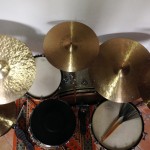 About a year later I called to make another appointment with Spizzichino to find a 19” mate for my Rivet Ride cymbal. “I have the perfect cymbal,” he said. I thought it a bit of an exaggeration. With all the cymbals he made how could he remember my previous purchase? I naturally brought the Rivet Ride for comparison. When I arrived I was surprised when Roberto said, “That wasn’t necessary; here try this.” Once again he was on-point. I asked how he could remember my previous year’s purchase. “I have a photographic ear,” he said. “I remember the sound of every cymbal I made.” Subsequent Spizzichino visits with good friend Stefano Bonazzi yielded a wonderful pair of 13”Hi Hats and a 16” Crash.
About a year later I called to make another appointment with Spizzichino to find a 19” mate for my Rivet Ride cymbal. “I have the perfect cymbal,” he said. I thought it a bit of an exaggeration. With all the cymbals he made how could he remember my previous purchase? I naturally brought the Rivet Ride for comparison. When I arrived I was surprised when Roberto said, “That wasn’t necessary; here try this.” Once again he was on-point. I asked how he could remember my previous year’s purchase. “I have a photographic ear,” he said. “I remember the sound of every cymbal I made.” Subsequent Spizzichino visits with good friend Stefano Bonazzi yielded a wonderful pair of 13”Hi Hats and a 16” Crash.
 My last visit with Roberto heightened my awareness of what a truly great craftsman Spizzichino was. I use the term “craftsman” as Roberto quickly corrected me during one of our lunches when I referred to him as an artisan. “I am not an artisan, I am a craftsman. I do not make art, I craft sound.” During one of our long discussions about cymbals, I lamented the fact that I have conducted a life-long search for a China cymbal. I told him that when living in San Francisco, I frequented a shop in Chinatown that sold only Chinese percussion instruments. With every shipment of new China cymbals I would try them all, with no success. Roberto asked me to be more specific. I asked if he had ever seen the video “Bob Haggart & Ray Bauduc-Big Noise From Winnetka.”
My last visit with Roberto heightened my awareness of what a truly great craftsman Spizzichino was. I use the term “craftsman” as Roberto quickly corrected me during one of our lunches when I referred to him as an artisan. “I am not an artisan, I am a craftsman. I do not make art, I craft sound.” During one of our long discussions about cymbals, I lamented the fact that I have conducted a life-long search for a China cymbal. I told him that when living in San Francisco, I frequented a shop in Chinatown that sold only Chinese percussion instruments. With every shipment of new China cymbals I would try them all, with no success. Roberto asked me to be more specific. I asked if he had ever seen the video “Bob Haggart & Ray Bauduc-Big Noise From Winnetka.”
[video][/video]
 With his characteristic big smile he said, “Therein lies your problem. You are looking for a “Swish” not a “China.” But, as with all types of cymbals, there are variances. I am going to the Frankfurter Musik Messe (Germany’s answer to NAMM) next week. Let me see what I can find.” About a week later I got a call from Roberto, “If you can believe it, not one good Swish in the lot. Not to worry…I’ll make you one.” Two weeks later the postman arrives with my treasure, an 18” Swish…at no charge! Laying a stick to it was like time-traveling back to the 1951 Western Electric filming of Bauduc and Haggart, taking Bauduc’s Swish off the stand, and returning to my living room. Spizzichino could “craft” sound that well. One year later Roberto recanted my “Swish” story in an article “status cymbal” in the Italian publication Ritmi. What an honor to be mentioned in an article about Spizzichino…only surpassed by the honor of being his friend.
With his characteristic big smile he said, “Therein lies your problem. You are looking for a “Swish” not a “China.” But, as with all types of cymbals, there are variances. I am going to the Frankfurter Musik Messe (Germany’s answer to NAMM) next week. Let me see what I can find.” About a week later I got a call from Roberto, “If you can believe it, not one good Swish in the lot. Not to worry…I’ll make you one.” Two weeks later the postman arrives with my treasure, an 18” Swish…at no charge! Laying a stick to it was like time-traveling back to the 1951 Western Electric filming of Bauduc and Haggart, taking Bauduc’s Swish off the stand, and returning to my living room. Spizzichino could “craft” sound that well. One year later Roberto recanted my “Swish” story in an article “status cymbal” in the Italian publication Ritmi. What an honor to be mentioned in an article about Spizzichino…only surpassed by the honor of being his friend.
---
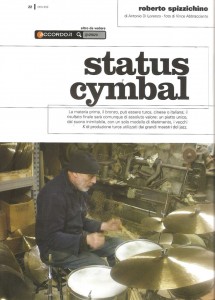 April 2011 Riitmi Magazine
“status cymbal” by Antonio Di Lorenzo
April 2011 Riitmi Magazine
“status cymbal” by Antonio Di Lorenzo
"Sto lavorando a questo Swish alla Ray Baduc (mi racconta) che Chet Falzerano (storico della Gretsch e dei K Zildjian, NdR) mi ha chiesto di costruirgli; il resultato e buono, ho utilizzato materiale italiano preso alla UFIP. E un bel 18" e suona molto bene; ormai penso poter lavorare bene con qualisiasi tipo di materia prima, turca, italiana, cinese o altro (intanto rivetta lo Swish e ne ascolta il suono con soddisfazione). Sei molto fortunato: ho appena finito di lavorare a quello che considero il mio capolavoro, e posso fartelo sentire."
Translates as:
"I'm working on this “Ray Baduc Swish” (he told me) that Chet Falzerano (the historian of K Zildjian and Gretsch, Ed) asked me to build him; the result is good. I used Italian material I got from UFIP. It is a beautiful 18" and sounds very good; now I can work well with any type of raw material, Turkish, Italian, Chinese or other (while riveting the Swish and hears the sound with satisfaction). You are very lucky; I just finished working on what I consider my masterpiece, and I can let you hear it."
